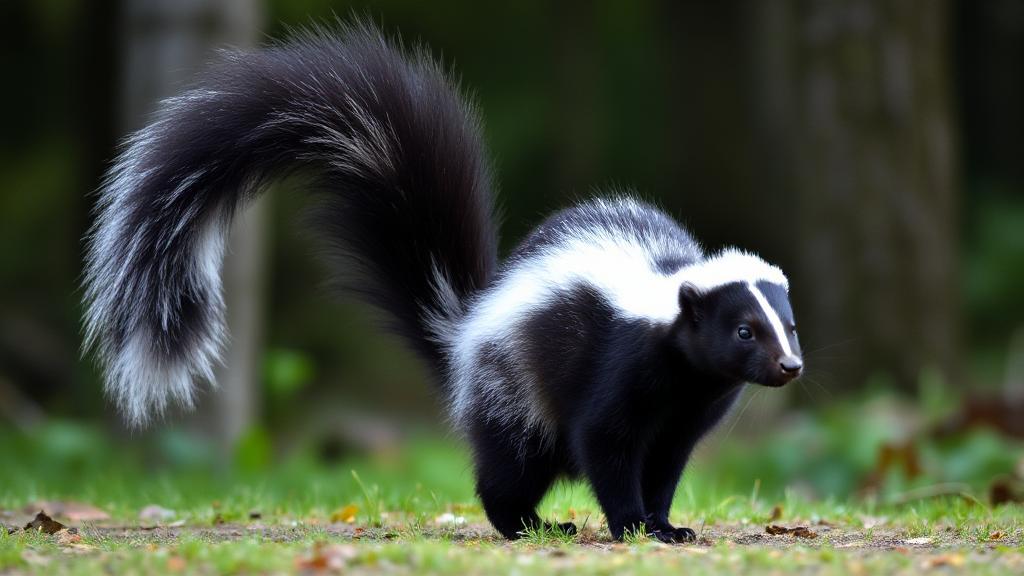Understanding Skunk Spray
Skunks are fascinating creatures, recognized by their distinctive black and white coloring and their notorious ability to spray a foul-smelling liquid as a defense mechanism. This unique capability allows them to ward off predators without physical confrontation.
The Mechanics and Anatomy
Skunks possess two specialized anal glands located on either side of their anus, which produce a sulfur-based compound known as thiol. Each gland can hold:
- 1/3 fluid ounce of spray
- Enough for 5-6 consecutive sprays
- Takes about 10-14 days to replenish fully
When threatened, skunks can contract muscles around these glands to eject the liquid with remarkable precision.
Maximum Spray Range
A skunk can spray its scent 10 to 15 feet (approximately 3 to 4.5 meters) with accuracy. However, the most effective range is typically between 6-10 feet, where the spray maintains its concentrated form. The scent can be detected from much farther away, sometimes up to a mile under the right conditions.
Spray Characteristics
The defensive spray has several notable features:
- Can be sprayed in a fine mist or steady stream
- Remains effective even when diluted
- Contains sulfur-containing chemicals
- Can cause temporary blindness and nausea
Spray Direction Control
Skunks demonstrate impressive control over their spray direction. They can:
- Spray forward, backward, or to the side
- Aim with remarkable precision
- Hit multiple targets simultaneously
- Adjust spray pattern based on threat level
Factors Influencing Spray Distance
Several environmental and physical factors can affect spray distance:
| Condition | Effect on Spray Range |
|---|---|
| Wind | Can reduce or extend range |
| Temperature | Higher temperatures increase volatility |
| Humidity | Can affect spray dispersion |
| Rain | May dilute spray effectiveness |
Additional factors include:
- Age and Size: Larger, adult skunks may have a more powerful spray
- Health and Stress Levels: A stressed or unhealthy skunk might not spray as effectively
Dealing with Skunk Spray
If you or your pet gets sprayed, try these remedies:
- Hydrogen Peroxide Solution: Mix 1 quart of 3% hydrogen peroxide, 1/4 cup of baking soda, and 1 teaspoon of liquid dish soap
- Vinegar and Water: A mixture of vinegar and water can help reduce the smell
- Commercial Skunk Odor Removers: Products specifically designed for skunk odor
For detailed instructions, visit this guide on removing skunk odor.
Prevention Tips
Keep a safe distance of at least 20 feet from skunks whenever possible. Most skunks will give warning signs before spraying, such as stamping their front feet, raising their tail, or doing a handstand.
To avoid encounters:
- Secure Trash: Ensure garbage cans are tightly sealed
- Remove Food Sources: Don't leave pet food outside overnight
- Install Motion-Activated Lights: These can deter skunks from entering your yard
For more information about skunk behavior and wildlife management, visit the National Wildlife Federation website or the National Wildlife Federation's guide on skunks.
